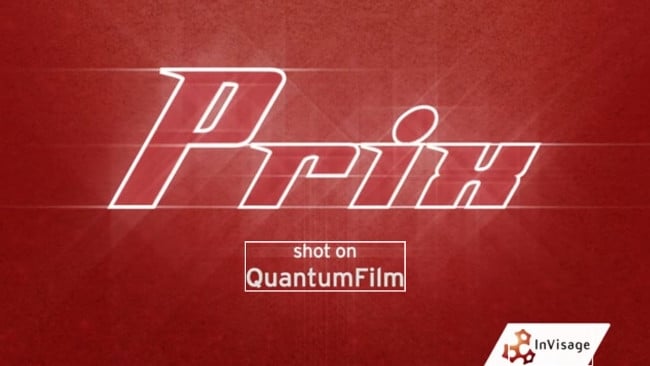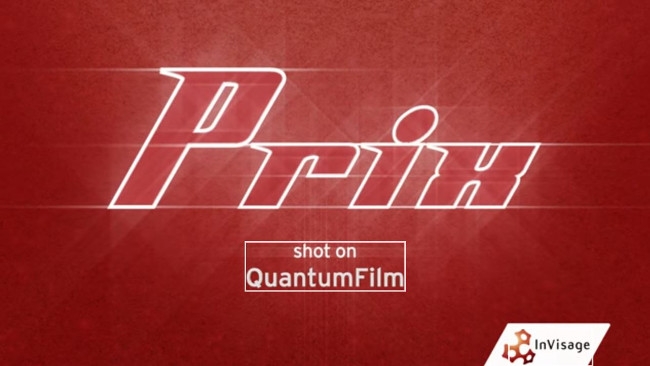
 Prix - The First Quantum Film
Prix - The First Quantum Film
Quantum film technology, by way of InVisage, has arrived as a tech advancement (as compared with phone cameras). But does it point the way forward for pro cameras?
Covering new sensor technology is something we do with caution because, as with new medical discoveries, it's easy to create a splash with something that's barely out of the lab and won't be seen in production devices for years. For this, though, we're making a carefully-considered exception.
Disclaimer
First, we must proceed with a word of caution. InVisage's Quantum Film technology is currently known only from a single short film in which it was shown in comparison to a conventional sensor, and that conventional sensor was specifically chosen to represent cellphone camera performance. The website is sketchy on the physics underlying the new technique, but it seems to be relying on a continuous layer of quantum-dot-based material to act as a photon-to-electron converter that's more effective than silicon. This is certainly reasonable, given that photons need to bounce around inside a region of silicon before they can dump their energy into the creation of an electron. Images released to date are certainly somewhat convincing, at least in comparison to the Brand X conventional cellphone camera chosen by the company.
A dose of perspective
To be completely fair, the key market for InVisage's Quantum Film technology appears to be cellphones, which is naturally a much larger and more lucrative market than cinematography. InVisage does talk about filmmaking, though, and has produced a short film to demonstrate its new tech. Whether it's the sensor technology or the grade, Prix has been repeatedly described as having a slightly classical, 1970s look, with warm, rich colours. Shot in unforgiving hard sunlight (though a reflector board is visible in the background of a behind-the-scenes video), the new sensor is certainly seen to outperform existing cellphone sensors. How well it would do against an Alexa, F65 or Panasonic's new Varicam 35, representing the zenith of silicon sensor development, is unknown, although looking at the development board on which Prix was shot, this looks to be a considerably smaller sensor with, presumably, commensurately lesser capability. Whether the company is in a position to produce a super-35-sized device for film and TV work (and whether they have any real commercial imperative to do so) is another matter, but it'd be interesting to see.
Intriguing innovations
Other than the claims for dynamic range and sensitivity, a dig through InVisage's website does reveal a additional characteristics which are of potential interest. First is the idea of dynamic pixel mapping, where pixel area on the sensor can be ganged together for increased effective pixel size and accordingly greater sensitivity and dynamic range. As opposed to the current technique of downscaling 4K material for improved noise performance, which is purely a postprocessing technique whether it's done in post or in camera, InVisage's technology is capable of doing this on the sensor, in the analogue domain, raising the possibility of a camera capable of trading off resolution for sensitivity on the fly.
The continuous nature of the quantum film surface also bodes well for fill factor, aliasing and response to non-telecentric lenses. The company talks repeatedly in its videos about global shutter, although the drawings they've presented to date suggest that this would still be a characteristic of the readout electronics, as opposed to anything specific to quantum film. One of the underlying upsides of the multilayer approach might well be the freedom to use a more optimised semiconductor process for the readout electronics, as they presumably aren't required to build photosensitive silicon devices (phototransistors or photodiodes) on the front, as conventional designs must do. What relationship this has to parallel developments in multilayer silicon devices, including sensors, isn't clear.
Quantum dot redux
We've talked about quantum dots before, as part of the fluorescent materials used to improve colour performance in modern LEDs. How they're applied to sensors is presumably part of InVisage's core intellectual property - not something we should expect to hear chapter and verse about in terms of precisely what the company is doing. Anyway, it's another advancement of potential interest to the film and TV industry; we shall wait for products with great anticipation.
Tags: Technology


Comments